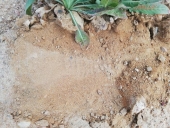this is almost exactly what I was thinking! Thanks a bunch
I understand that the barrel design has the advantage of more immediately intense radiant heating. So if the goal is warming up a freezing shop or drying something as quick as you can, that's what you want.
However, most people's goal is home heating.
I'm wondering
1.) how to modify the stovetop RMH to get the full efficiency? (I think this stove top RMH reported 83% efficiency in the video.) how much closer would you be if the chimney pipe wasn't just next to the bell, but a surface in it? Would the heat loss be worth it? Could it be done by just making the chimney tall enough?
2.) the distance between the firebox and stove top seems short. Don't you get more draw by making this distance longer as with the chimney?
3.) how much more draw (less friction) do you get from a round masonry bell.
4.) if a thick cast iron plate would be a more effective stove top, or if the ceramic ones are as thermally conductive. I very much like the idea of the stove top just being quite heavy and sitting on a gasket.
5.) can the firebox be made wider at the opening so as to increase visibility
Thoughts on the mass and ducting design;
The advantage for all the mass is that you don't have to do a fire every day, but if it's also a stove seeing daily use for tea or whatever (home heat) this isn't a huge difference.
(taken from Erica Wisner's explanation in another thread) "Then there is the 'plenum' idea, where the whole floor is tile supported on masonry pillars over a cavity. These are used with big honking fireboxes for the k'ang, ondol, and hypocaust systems. But there is a constant concern and various techniques for making sure the hot exhaust doesn't creep through floor cracks into the room. Some use layers of tile, clay, and tarpaper or oilcloth with more clay over that. Then you have to tear out the floor periodically to clean the plenum"
Does the somewhat massive flagstone in this bench/mass design not effectively resolve this issue? I was kind of surprised he just used sand and clay to fill the gaps between stones on top, and didn't have a leak story.
If it's one piece you can easily fit through, you only have to remove 1 piece to access/clean it. If there's only 1 piece that needs to be removed to access and clean the stratification chamber, the rest of the pieces could use 4 strong people for moving, thus getting some more serious mass into the design despite the empty stratification chamber.
Seems like you are going to be losing significant heat having the chimney intake almost directly below the bell exhaust if the stratification chamber is only 110 gallons or so. I suspect the chamber volume needs to be really big in comparison to the airflow rate in this setup, or else most the hot air won't do much stratifying before it's sucked out the chimney.
I would guess the stove-top-masonry-bell design is probably going to be a lot more popular for home heating. Most people aren't exactly stoked on the "big tank of something" + "can barely see the fire light" look. Also, they kind of have a visceral rejection to cob (they want to be "above mud" or something. I find this silly.) Also, limiting the metallic radiant surface has a safety benefit, in that bricks will usually take more than a moment to blister you and people are less likely to inadvertently bump into a stove top (no to say they haven't burned plenty of people...)







